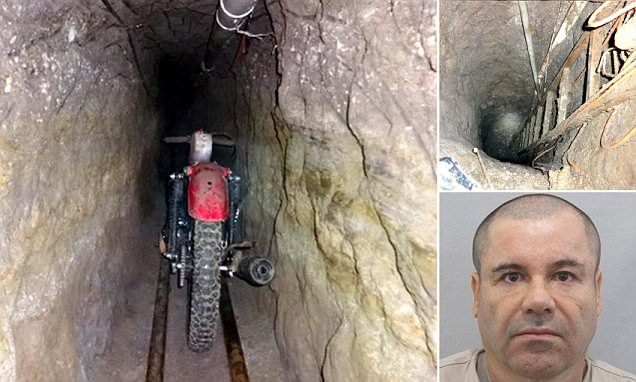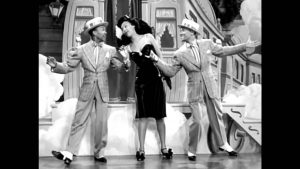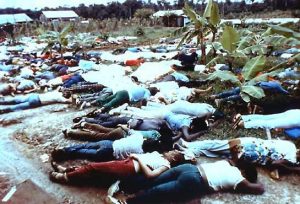Have you ever imagined being a billionaire? How about being a fugitive? Well, El Chapo was both a billionaire and a fugitive. Joaquin “El Chapo” Guzman became the leader of the Sinaloa cartel in the late 1980s. He was first captured on June 9, 1993, and was transported to Almoloya maximum security prison in Mexico. El Chapo constantly asked to be relocated, and in November of 1995, he was sent to the Puente Grande prison near Guadalajara. On January 19, 2001, El Chapo escaped by hiding in a dirty-laundry cart which guards led to the gate, and then he proceeded to walk out the building dressed as a policeman. The escape was like something you would see in a movie. Shortly after his escape, El Chapo resumed his leadership in the Sinaloa Cartel, which is one of the most powerful and violent drug trafficking syndicates in the world. The Sinaloa Cartel primarily smuggles and distributes Columbian cocaine, Mexican marijuana, methamphetamine, and Mexican and Southeast Asian heroin into the United States.1

On February 22, 2014, El Chapo, asleep next to his wife and 2-year-old twin daughters, was captured at a hotel in Mazatlan, Sinaloa. He had no time to escape nor grab his weapons. Once he was captured, the United States wanted El Chapo to be handed across the border for drug trafficking charges in U.S. federal court. However, Mexico insisted that they would detain El Chapo, and keep him so secure that he would not see the world in hundreds of years.2 He returned to prison after making a legendary escape 13 years ago through a tunnel he had fabricated. The prison he was placed in went to great lengths to ensure its security — by checking if the walls were hollowed, having a set shower time, and forcing inmates to have their heads shaved every seven to twelve days. Mexico officials felt that El Chapo should do his time in Mexico before being extradited to the United States.3

On Saturday, July 11, 2015, word spread that El Chapo had escaped Altiplano Prison again. The next morning Mexican officials confirmed this news. Surprisingly, he had escaped through a 1.5-kilometre tunnel from a small opening in the shower area of his cell.4 Altiplano has a multitude of ground-level security measures such as the prison being covered in CCTV cameras and access control points.5 El Chapo was located in the special treatments area, hallway two, cell 20. The video footage Osorio Chong released from inside El Chapo’s prison cell showed Guzman entering the shower then disappearing at 8:52 p.m.6
One inmate, Flavio Sosa, was in the same unit seven years prior at the prison from which El Chapo escaped. He claims that this prison is not one you can easily escape from, because there are only 20 inmates in the special treatment area and a camera is watching you at all times in your cell. On top of that, there is a special visit program to intimidate inmates and inspect every cell thoroughly. In his words, “They strip you naked and once you are naked you have to do three squats, show them your testicles… Then, they enter your cell with dogs to examine it, with a tool that they use to knock on the wall on the floor… You have a shower time at 5:45 in the morning. Nobody can turn on the shower during the day or night.” This escape really exposed the weaknesses in the Mexican justice and prison system.7

This isn’t the first time El Chapo has used tunnels to traffic or escape authorities. The tunnel he used to escape Altiplano prison also gave people a glimpse of the tunnels the Sinaloa Cartel likely use to traffic drugs across borders without being detected. Many people blame the Mexican government for the escape of El Chapo, causing them to lose trust in their government. El Chapo’s escape was demoralizing — through it, Mexican citizens lost the trust of the government’s abilities to protect their citizens as well as the trust between both borders. 8
- Romero L. Gomez, “El Chapo’ jailbreak is both a Mexican and an American story,” The Conversation (1-4), July 17, 2015. ↵
- E. Eduardo Castillo and Katherine Corcoran, “Cartel boss escapes Mexican prison; Joaquin ‘El Chapo’ Guzman used elaborate, 1.5-km tunnel in second break from jail,” The Toronto Star, 2015. ↵
- Rafael Castillo, “Inside El Chapo’s Escape Tunnel,” Vice News, Jul 24, 2015, video. ↵
- E. Eduardo Castillo and Katherine Corcoran, “Cartel boss escapes Mexican prison; Joaquin ‘El Chapo’ Guzman used elaborate, 1.5-km tunnel in second break from jail,” The Toronto Star, 2015. ↵
- Helen Regan, “Newly-Released Footage Shows Joaquin ‘El Chapo’ Guzman Moments Before His Escape,” Time, 2015. ↵
- Rafael Castillo, “Inside El Chapo’s Escape Tunnel,” Vice News, Jul 24, 2015, video. ↵
- Rafael Castillo, “Inside El Chapo’s Escape Tunnel,” Vice News, Jul 24, 2015, video. ↵
- Alfredo Corchado, “Mexican drug lord Joaquin ‘El Chapo’ Guzman tunnels out of prison,” Dallas Morning News, July 13, 2015. ↵



147 comments
Eric Ortega Rodriguez
This article was really informative. I have heard of escapes made by El Chapo and have always wondered why that was if supposedly the prisons should have been highly secured. However, it seems that there were strict procedures that the prison in Mexico so it most likely was that El Chapo was receiving external help. Overall, a good article with a good selection of pictures.
Sergio Garcia
This was most definitely a good read, I feel like I actually learned something new about El chapo.
Rylie Kieny
The idea of cartel leaders escaping prison while in custody of a very corrupt government is, unfortunately, nothing new. You heard it happened with Pablo Escobar and this is just another case. These drug lords would often times pay off officials in order to get lesser sentences or special treatment. I believe in this case a police officer or someone with authority was coaxed into helping El Chapo Escape. If the prison was really as tough as they claimed he would have had an escort at all times and never would have the opportunity to escape. I think this story and stories alike show the power money can have over people and their morals.
Megan Copeland
I knew about El Chapo’s escapes from prison before, but I had never heard about how difficult it was for him to escape. I always just assumed he was in a minimal security prison that was run down. This article makes me wonder how much help he got from the security guards to escape the prison. I liked this article because it explained how difficult it was for El Chapo to escape, and the great lengths he went to to escape not once but twice.
Alyssa Garza
This article is interesting especially since it sounds like the Mexican government is corrupt. If the government really wanted for El Chapo to pay his time they should have sent him to the United States so he wouldn’t have a chance to escape again. Someone in a high position in that jail probably helped El Chapo escape to get something out of it.
Robert Freise
The most notorious drug pin in Mexico, El Chapo Guzman. The Mexican government has so much to do with El Chapo’s escape due to the combination of El Chapos influence within the government of Mexico and the overwhelming bribes and fear tactics that El Chapo and his men would put upon officials within the Mexican states. This would pressure people to fall within El Chapos line of order. I feel that the Mexican government is keeping El Chapo because his fear he uses on officials dictates where he will be put.
Kristy Feather
This article really makes me question whether or not El Chapo conducted this only on his own and with the help of the cartel. Even if the prison system wasn’t as high class as other countries, you would think that he would have been put in a high security prison and therefore it would be nearly impossible for him to escape without inside help from either authorities or the guards themselves. I’m wondering if maybe he was receiving help from someone on the inside of the prison as well as help from the outside.
Montserrat Moreno Ramirez
This story was broadcasted internationally and it wowed everyone, how can someone build such a long tunnel and no one hears anything? El Chapo has been an icon of drug dealing, trading, corruption, among others since he took the leadership of the Sinaloa cartel.
It’s sad how involved the government is involved in all this, they are supposed to take care of the people, instead they do the opposite.
Daniela Duran
This was a very nice article! am really impressed by how many members of famous drug cartels, such as el Chapo, are able to escape with so much ease! Obviously, there must be someone inside the prison helping them, because otherwise, how would they do it? I am really shocked by how many times El Chapo has managed to escape the authorities, and I truly don’t understand why Mexico did not accept of him to be extradited to the US! Perhaps the prisons in here would have kept him a lot more restricted, and he would not have been able to escape.
Avery Looney
This article is very well written and very interesting. It is very difficult for someone to escape from prison, but to do it twice? That is unheard of. It is hard to believe that El Chapo could pull off both escapes with no help from the inside. I think the reason he was able to escape was because guards inside the prison were in on it, but we will never know for sure.